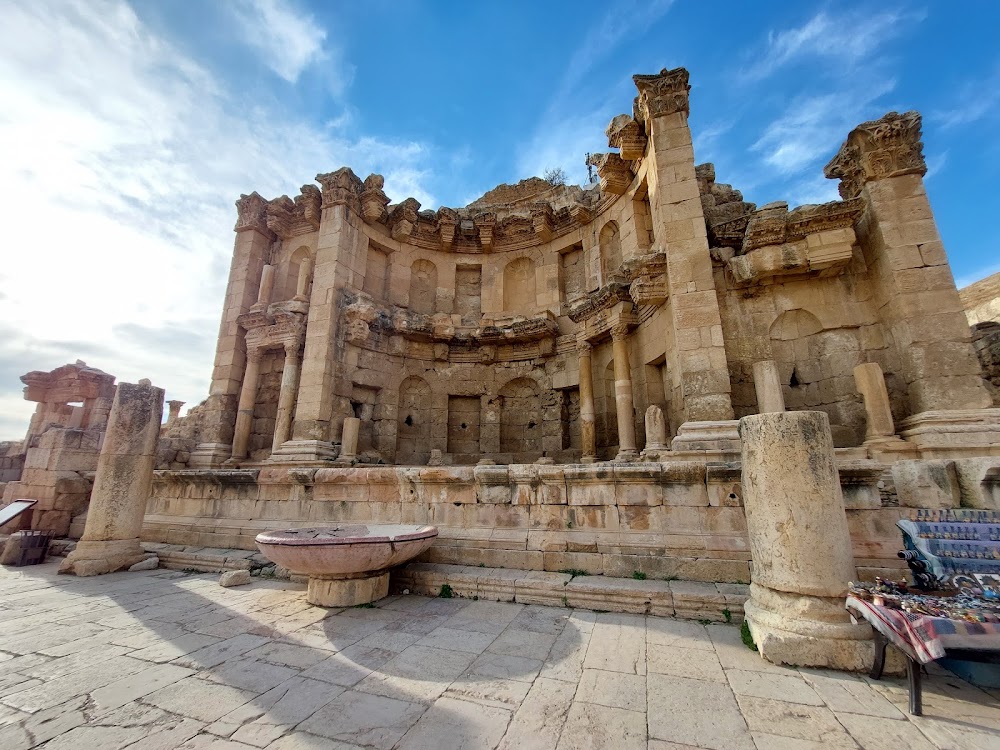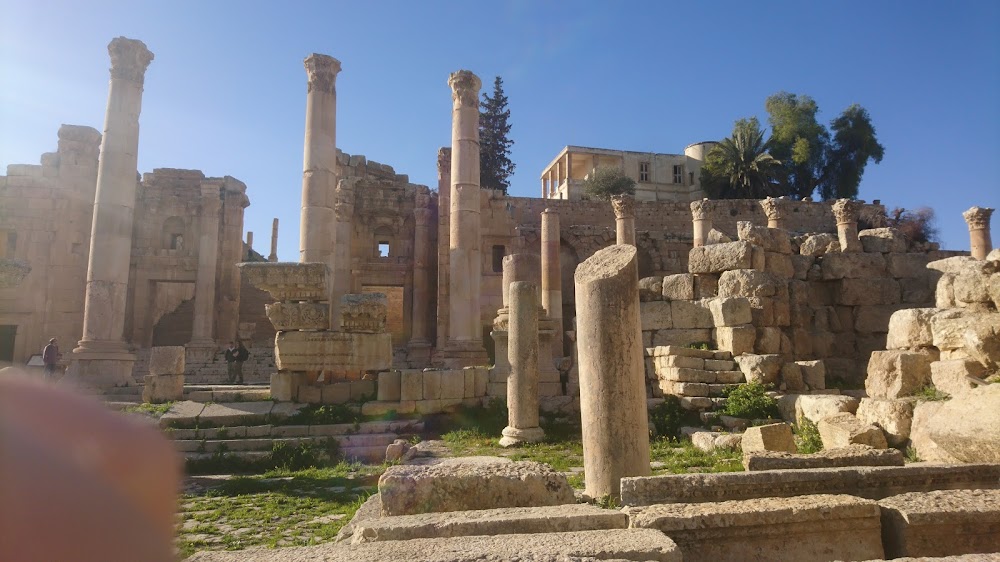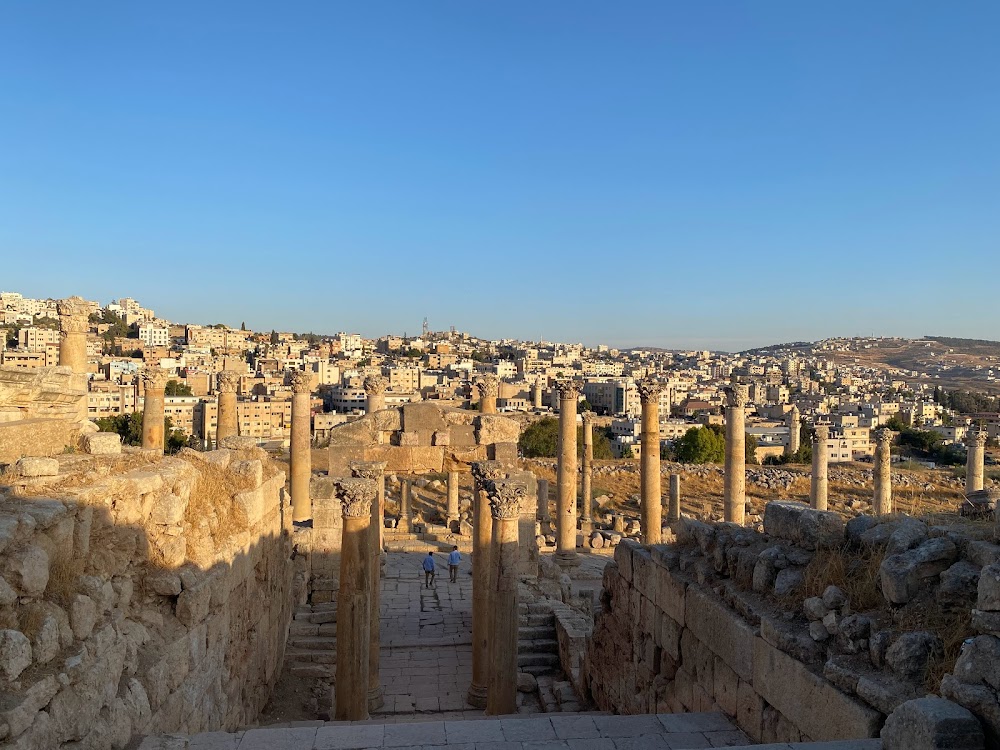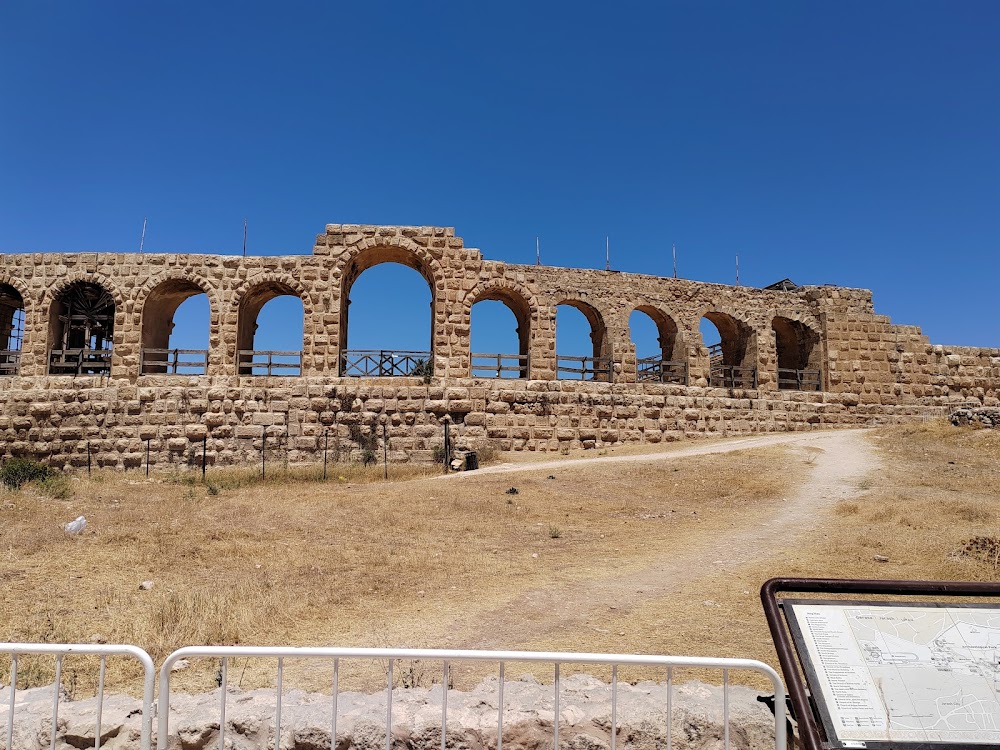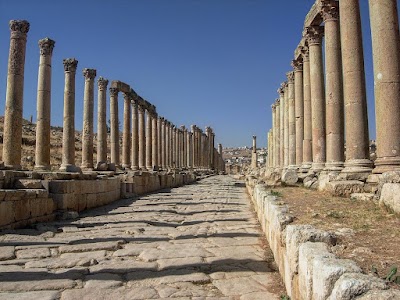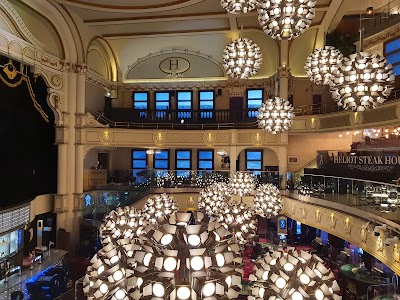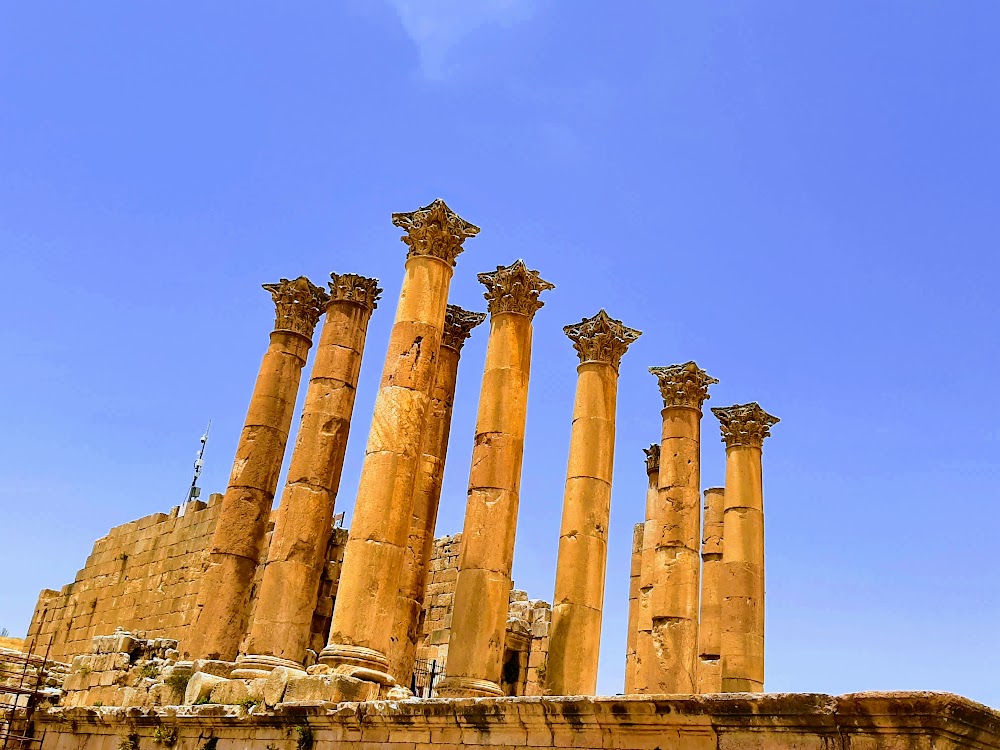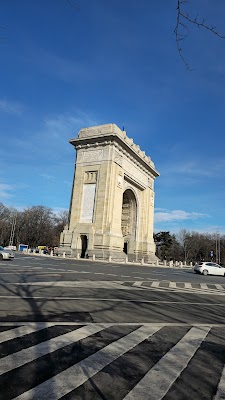Nymphaeum (نيمفايوم)
Overview
In the heart of Jerash, Jordan, lies the magnificent Nymphaeum—a grand public fountain dating back to the Roman era around 191 AD. This splendid monument was dedicated to the nymphs, the divine spirits believed to inhabit water sources. The Nymphaeum served both utilitarian and ornamental purposes, supplying water to the local populace while showcasing the architectural prowess of its time.
The construction of the Nymphaeum exemplifies the remarkable skills of Roman engineers and artisans. Its semi-circular façade features two tiers of columns adorned with intricate carvings and elaborate niches that once housed statues. The upper level is distinguished by Corinthian columns—a hallmark of Roman architecture—while the lower level showcases Ionic columns, creating a striking visual harmony through a blend of styles.
At the center of the Nymphaeum is a large basin that originally held flowing water, descending from elaborate niches and spouts. This cascading water would have created a visually enchanting and soothing atmosphere. The central niche, likely the most adorned, may have once featured a grand statue of a nymph or deity, although this has sadly not survived the test of time.
Ingenious engineering marvels facilitated the water supply for the Nymphaeum. Roman engineers channeled water from nearby springs and aqueducts, ensuring a steady flow vital for both the fountain and the inhabitants of Jerash. The design cleverly incorporated lead pipes and terracotta channels, guiding water through the structure and enabling the dramatic displays characteristic of such monuments.
The Nymphaeum was also resplendent in decorative artistry, featuring mosaics and colorful stones meticulously crafted to reflect the opulence of Roman decorative arts. The walls were likely adorned with a combination of stucco and marble veneers, while the floor might have showcased elaborate mosaics depicting aquatic themes, further emphasizing the fountain's connection to water and nature.
Throughout the centuries, the Nymphaeum has endured various challenges, including earthquakes, invasions, and natural wear and tear. Despite these adversities, it remains a testament to the advanced engineering and artistic achievements of the ancient Romans. Today, it stands as one of Jerash's most captivating archaeological sites, drawing visitors from around the globe who come to admire its beauty and contemplate the rich history of the Roman Empire’s influence in the region.
Thanks to ongoing excavations and restorations, much of the Nymphaeum's original form and function has been preserved. Archaeologists have uncovered insights into the daily lives of Jerash’s ancient residents, shedding light on how such public works were central to Roman urban planning and social life. The Nymphaeum exemplifies the art of integrating utility with aesthetic appeal, a hallmark of Roman engineering.
Today, tourists can wander through its majestic remnants, imagining the water once cascading from its vibrant spouts. Visitors can feel a connection to the past inhabitants who gathered around this stunning tribute to the nymphs. The Nymphaeum in Jerash remains not just a monument of stone but a living archive of human ingenuity and the enduring legacy of Roman civilization.


